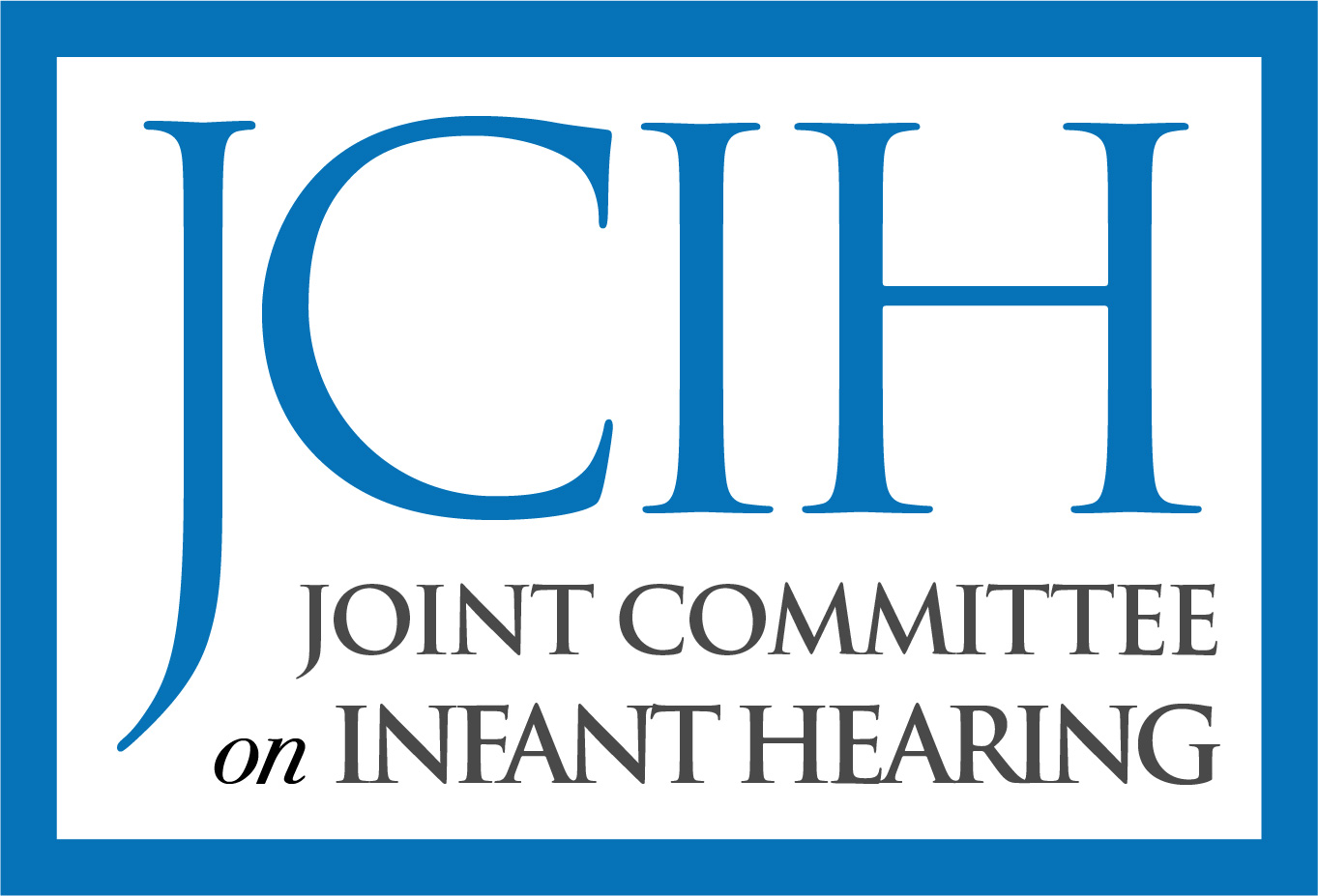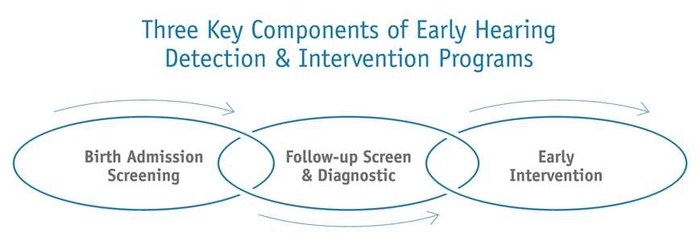 |
|||||||
History of the Joint Committee on Infant Hearing The Joint Committee on
Infant Hearing was established in late 1969 and composed of representatives
from audiology, otolaryngology, pediatrics, and nursing. It was the American
Speech Language Hearing Association (ASHA), the then American Academy of Ophthalmology
and Otolaryngology (AAOO) and the American Academy of Pediatrics (AAP) who first
met. The Committee was charged with a two-fold responsibility: first, to make
recommendations concerning the early identification of children with, or at-risk
for hearing loss and second, newborn hearing screening. In 1970, the committee's
first statement was that mass hearing screening could not be justified at that
time because there were no appropriate test procedures. The statement encouraged
ongoing research and acknowledged the need to detect hearing loss early in life.
Throughout its over 30-year
history, the Committee explored the complexities of hearing loss and its effect
on a child's development, seeking to find newer and better methods to identify
and serve the infants and their families. Today, the Joint Committee is comprised
of representatives from the American Academy of Pediatrics, the American Academy
of Otolaryngology and Head and Neck Surgery, the American Speech Language Hearing
Association, the American Academy of Audiology, the Council on Education of
the Deaf, and Directors of Speech and Hearing Programs in State Health and Welfare
Agencies. The Committee's primary
activity has been publication of position statements summarizing the state of
the science and art in infant hearing, and recommending the preferred practice
in early identification and appropriate intervention of newborns and infants
at risk for or with hearing loss. A 1972 statement delineated the first high-risk
factors for hearing loss and recommended following infants with these high risk
factors: history of hereditary childhood hearing impairment, congenital perinatal
infection such as rubella or other nonbacterial fetal infection like cytomegalovirus,
and herpes; craniofacial anomalies, birth weight less than 1500 grams and a
bilirubin level greater than 20. In 1982, bacterial meningitis and severe asphyxia
were added. Additional risk indicators were added between 1982 and 1994. Each
statement has become more explicit in its recommendations for detecting and
monitoring infants with suspected hearing loss. In 1994, the JCIH endorsed
universal detection of hearing loss in newborns and infants and stated that
all infants with hearing loss be identified before 3 months of age and receive
intervention by 6 months. To gain access to most infants, the JCIH recommended
evaluation prior to hospital discharge. Through the 1994 Position Statement,
the JCIH supported and clarified the NIH Position Statement in an effort to
move our common agenda forward. Following publication of the 1994 statement, the JCIH committee members recognized the importance of stakeholder input if members were to understand what was needed next. The first JCIH stakeholders meeting was held in Dallas in 1995. Proceedings were published in the American Journal of Audiology and provided committee members with the critical issues that needed addressing if early detection was to become a successful reality. Committee members acknowledged that poorly designed and managed programs would prove detrimental to early identification efforts. In 1999, Pediatric Clinics of North America published an issue on early hearing loss with all chapters written by current and former committee members. That issue was the precursor to the comprehensive and widely peer-reviewed 2000 position statement. JCIH 2000 recommends universal screening of hearing loss before hospital discharge and identifies Principles and Guidelines for hospital and state level programs. The 2000 statement promotes a system as essential for the detection and intervention of early hearing loss. That system is composed of screening before hospital discharge, follow-up and diagnosis for infants needing additional care and the intervention and habilitation for infants identified with hearing loss. (Figure 1: Three Component of Early Hearing Detection and Intervention Programs). In 2000, the focus is on quality and assuring that each infant receives the care she needs. The JCIH continues its efforts to promote quality in early hearing detection. In 2001, a second stakeholder conference was held in Rockville Pike Maryland. The goal of that meeting was again for committee to learn about needed next steps. Presentations"JCIH: The Early Years" (PDF) "JCIH: The Middle Years" (PDF)
|
© Joint Committee on Infant Hearing - All Rights Reserved
